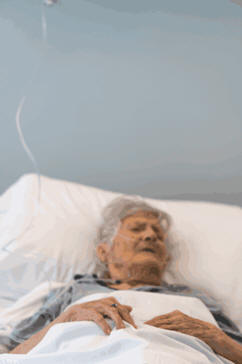|
When local barriers to wound healing exist, the bodys resources are divided between the healing process and the need to fight infection, clear debris, and other activities during the inflammatory stage.
Persistent wound trauma includes the presence of toxic agents and mechanical trauma. Repetitive pressure, shearing, friction, and debridement can reinitiate wound responses. Even treatment with iodine, hydrogen peroxide, silver sulfadiazine, or acetic acid can impair and destroy fibroblasts, causing a delay in healing.
The presence of excessive necrotic tissue, composed of collagen, elastin, fibrin, and dead cells, impairs wound healing through reduced reepithelialization and increased risk for infection. In addition, necrotic tissues release toxins and enzymes that can counteract growth factors. If necrotic tissue is present, it must be removed to allow reepithelialization or the wound may stall in the inflammatory phase. Necrotic tissue includes slough, a moist loose, stringy, yellow tissue and/or eschar, a dry thick, leathery, black tissue.
When healing is stalled in the inflammatory and proliferative stages, a matrix deficiency state may result. In this case, there may be a lack of matrix components to provide physical and biochemical support to proliferative activities resulting in a non-healing wound.
Malnutrition may occur in 30% of surgical, 45% of non surgical, and 53-70% of older non-hospitalized patients. Aging increases the risk of malnutrition and poor skin tensile strength. Protein deficits are of particular concern because of a greater risk for infection and non-healing. In addition, vitamin C and zinc are important to the bodys defense during wound healing and may be more of a problem in older aged and malnourished patients. Finally, dehydration can slow the bodys metabolism and reduce skin turgor, which leaves the skin open to new and recurring wounds.
Weight loss in patients is a significant concern for wound healing. A 10% weight loss results in decreased immune function and increased infection rates. This level of weight loss is associated with a 10% greater risk of mortality. At 15% weight loss, a decrease in healing is seen as is an increase of 15% in mortality. At 20% weight loss, severe weakness occurs with very poor wound healing and an increase to 30% mortality. After 30% weight loss the patient will be too weak to sit, typically experiences non-healing pressure sores, pneumonia and a 50% mortality rate. At 40% weight loss the mortality rate is 100%.
|
||||||||||



